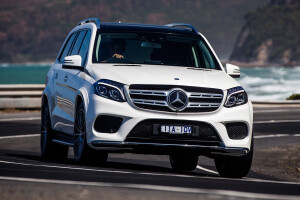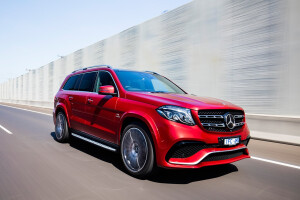Latest Review
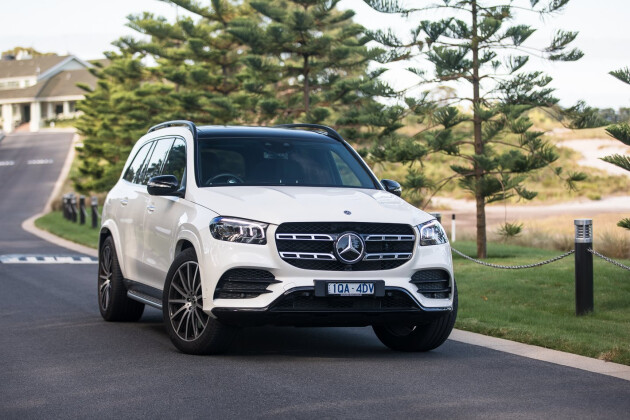
2020 Mercedes-Benz GLS400d review
With more acreage than a country estate, the biggest Benz SUV makes a commanding statement
Overall Rating

Plus & Minus
PlusPlush ride, composed dynamics, cavernous space, smooth and gutsy engine
Minus Entry price premium compared to rivals, cost of some options
The Wheels Verdict: The GLS’s only major downfall is the price premium Mercedes demands compared to key German rivals. However, judged on its merits, the big Benz delivers, with real presence and almost unparalleled cabin space and comfort. A gutsy diesel engine, paired with refined ride and dynamics make it a compelling all-rounder.
What is the Mercedes-Benz GLS 400d?
Now in its third generation, the Mercedes-Benz GLS is the biggest SUV in the German brand’s range. It majors on luxurious practicality, with two variants on offer powered by a pair of straight-six turbocharged engines. The higher-end AMG and Maybach versions will arrive later in the year.
Why we’re testing it
Australia’s appetite for luxury behemoths of this ilk is only growing. BMW’s X7 and Audi’s Q8 offer two distinct takes on the genre – the former offers copious space, while the latter focuses more on driving dynamics. The GLS is more expensive than both, so we need to find out if it can beat its specialist rivals by doing enough to offer the best of both worlds.
Review
Segment creep is an automotive phenomenon where cars grow by a few centimetres each generation. These are often nominal increases at the time, but over the decades it results in situations like how the current 3 Series appears bloated and oversized if put side-by-side with an original E21.
Mercedes-Benz has taken this to the extreme with the GLS, stretching by 77mm compared to the previous generation, bringing its total length to 5207mm. Of that extra length, 60mm has been added directly between the wheels, boosting the wheelbase to 3135mm.
Why has Mercedes done this? It’s all in an effort to make the GLS one of the most practical vehicles for moving a large number of people (and their luggage) this side of a commercial vehicle.
Powering the GLS is a choice of one of two 3.0-litre straight-six turbocharged engines, which send power to all four wheels via a nine-speed automatic transmission. The GLS 450 starts the two variant range at $146,500, powered by an ‘M256’ petrol engine with EQ boost (fancy speak for a mild-hybrid system) sending 270kW/500Nm to the treads.
However, it’s the $153,300 GLS 400d that we have on test, powered by the ‘OM656’ diesel, with claimed outputs of 243kW and 700Nm – sizeable increases of 53kW and 80Nm compared to the second-gen GLS 350d it replaces.
This is expected to be the more popular variant, and acceleration is claimed to be a crisp 6.3 seconds to 100km/h – impressive considering the nearly 2.5 tonne heft of the vehicle.
Behind the wheel it’d be easy to forget you were driving a diesel engine, with nary a hint at any of the old oil-burner clichés present. It’s just the lowly redline that gives the game away, and that prodigious low-end torque. The nine-speed gearbox shuffles between gears subtly, without constantly searching for the right ratio when you lay into the throttle
Fuel economy is a claimed 7.7L/100km, which combined with a 90 litre fuel tank, means the GLS 400d’s cruising distance stretches well into the 1000km range.
AMG Line styling is standard in Australia. This is the first Merc which can be fitted with 23-inch wheels from the factory; our test vehicle came with 22-inch rims as part of a $2500 night package styling option, wrapped in meaty Continental Premium Contact 6 rubber – 285/45/22 at the front, and 325/40/22 at the rear.
Air suspension is standard, with Merc engineers reworking the front axle design in an effort to reduce tyre noise and vibrations. As a result, the ride is plush and cosseting, with impressive body control. Damping is well sorted, with the GLS regaining composure quickly following large bumps.
This is not to the detriment of dynamic ability either, with the GLS able to be hustled at a speed that defies its imposing physical stature. Describing it as agile would be a stretch, particularly on tighter mountain roads, but on medium to large radius bends the GLS has confident turn in, and planted mid-corner grip. In sport mode the car becomes more composed dynamically, without becoming overly stiff.
Mercedes’ crazy E-Active Body Control system is available if you want to ratchet comfort levels up further, for an eye watering $13,000, but how much are you willing to pay to essentially eliminate speed bumps from existence?
The cabin is hushed at cruising speeds, with impressive refinement keeping noise intrusion from wind and road at a minimum.
The dimensional nip and tuck hasn’t been in vain, with the GLS offering supreme space inside for both animate and inanimate cargo. Second row seats can slide fore and aft, with up to 87mm of leg room offered, which is extremely generous.
Mercedes claims people up to 6ft4 can feel comfortable in the third row of seating. While we didn’t wedge someone that large into the space, your 6ft1 writer clambered in and out with relative ease, and didn’t feel cramped in the space, comparing it to many mid-size SUV second row seats.
If you want to understand the lengths Mercedes has gone to expand the GLS, even the sunroof is 50 percent larger than the previous generation.
Boot space is, frankly, vast. With all three rows of seating raised there’s 355 litres of luggage space, growing to 890 litres with just two rows being used. These are increases of 60 and 210 litres respectively compared to the previous generation GLS. With both second and third row seats folded flat, the GLS offers 2400 litres of luggage space, with 2.2 metres of useable length.
A switch is easily accessible at the boot which lowers the rear of the car, and each seat can be electronically raised or lowered individually. The spare wheel in the boot can be accessed even with all three rows of seats being used.
Despite its almost six-metre length, the big Benz isn’t unwieldy, with an admirable 12.5-metre turning circle, and enough parking cameras and sensors to land a lunar module.
Heated and cooled seats, with hot stone massage function, are standard up front, while the powered seats now have increased adjustability. Six USB-C ports are offered to rear seat occupants, in addition to the four cupholders and two bottle holders. Child seat top tether attachments are available for second and third row seats; while five-zone climate control is standard with no shortage of air vents offered in each row.
The driver is treated to a massive head-up display that feels like something ripped straight from a science-fiction fighter jet. All the information you could desire is offered up, without having to take your eyes off the road. If you do lower your gaze, information is displayed on the dual 12.3-inch displays which turn the central touchschreen and driver instruments into one continuous panel. These are powered by Mercedes’ MBUX system, which includes Apple CarPlay and Android Auto as standard.
Stuttgart’s entire safety suite is offered as standard, while augmented reality sat-nav is part of an $800 option. This system, which is relatively new to Australia, is best suited to situations where you are driving in unfamiliar territory.
The GLS has a towing rating of 3500kg, but you’ll need to fit the optional $1900 towbar package before you hitch a wagon to the rear. If you are a proper off-roading masochist, you can also tick the box for the $3500 off-road engineering package catering to those specific needs, which includes a low-speed transfer box among its goodies.
These sorts of options could raise the price of the GLS even further above its rivals, which sit in the lower half of the $100,000 bracket. This is the Mercedes’ only real downfall, with premium pricing compared to rivals. But for the way it pairs practicality with luxury and driving dynamics, we’d argue the price is worth it if you are in the market.
The rivals
BMW X7, Audi Q8, maybe a bus?
Specs and price
Model: Mercedes-Benz GLS 400d
Engine: 2925cc straight-six, dohc, 24v, turbo diesel
Power: 243kW @ 3600-4000rpm
Torque: 700Nm @ 1200-3000rpm
Transmission: 9-speed automatic
Weight: 2490kg
0-100km/h: 6.3sec
Economy: 7.7L/100km
Price: $153,300 ($158,700 as tested)
On sale: Now
WhichCar Mercedes-Benz GLS400d review
The Mercedes-Benz GLS400d is like an S-Class on stilts
Tom Fraser
The Mercedes-Benz GLS may often be relegated to being a school pick-up tool, but this Toorak tractor has a serious bag of tricks.
What is the Mercedes-Benz GLS400d?
It’s the largest and most opulent SUV you can buy from Mercedes-Benz currently, only to be surpassed by eventual Maybach and AMG versions at a later date.
The Mercedes-Benz GLS400d we have on test is one $153,300 part of a two-strong range which also includes the $146,500 GLS450 petrol version. The GLS400d is powered by a 3.0-litre inline-six turbo-diesel engine that produces 243kW and 700Nm.
It offers genuine S-Class levels of comfort in a high-riding body that can seat up to seven people among three rows.
The GLS competes with BMW’s X7 range and to a lesser extent Audi’s Q8 range (which focuses more on style and driver engagement), but it is worth noting that as a base without options, the GLS400d is almost $30k more expensive than the equivalent BMW X7 xDrive30d.
Luckily the GLS400d comes very well equipped as standard, with AMG styling, air suspension, tinted privacy rear windows, LED headlights, powered boot release, panoramic sunroof and keyless entry and start all featuring on the outside, while ambient lighting, configurable head-up display, 13-speaker Burmester surround sound system, open-pore oak wood panelling and multi-contoured front seats with heating, ventilating and massage functions are found on the inside. Just to name a few things.
The fact of the matter is the GLS400d does cost extra on top of its rivals, but it certainly presents a strong base package in return as well.
What is the Mercedes-Benz GLS400d like to drive?
Given its gargantuan size, the GLS400d isn’t the easiest thing to whip around in. It’s phenomenally comfortable because of it, but the footprint takes some getting used to before you can handle regular manoeuvres with ease.
Knowing where to place the car around corners, on tight laneways and reverse parking all take some getting used to, helped thankfully by the expert-level camera system which extends a full 360 degrees around the car.
While the GLS400d is expressly plush no matter where you take it, the city is not its playground – much more capable operating once roads are a bit quieter, spaces are slightly larger and streets are wider.
On the way out to greener pastures, the GLS is a divine freeway tourer. Very-adept radar cruise control takes some of the load off while your backside is fittingly massaged by the sumptuous leather seats. There is a wallop of overtaking power available thanks to the strong 243kW/700Nm turbo diesel and the nine-speed transmission is incredibly smooth, switching ratios often without notice.
Veer off the freeway and start to get stuck into some tighter curves and the GLS obviously begins to come unstuck. It fares fine around switchback corners at a leisurely pace but seriously doesn’t want to be hustled around which is understandable.
Torque and power levels ensure hills are easily ascended, and the engine even sings a powerful straight six growl which is cool.
What is the Mercedes-Benz GLS400d like to live with?
The grandiose nature of the GLS is a joy to live with. It’s about as comfortable as motoring gets without venturing into a Bentley or Rolls-Royce dealership and can ferry up to seven in supreme comfort.
From the first row to the third, space is commodious and seats are very adjustable to find the ‘right spot’. Entry to the third row is made simple thanks to electric seats that roll forward themselves providing a large aperture to squeeze through, while the rear seats fold up electrically too. Even for this six-foot-four tester, there’s a surprising amount of legroom back there.
One thing there seemed to be no adjustment for was the seat base angle for the second row, which was heavily raked upwards. It wasn’t uncomfortable but if you’re going to offer electric seats in the second row you might as well make sure all of it is adjustable.
The car is very well put together, and is quietly insulated from the outside world in terms of road and wind noise. But there was one squeak we kept hearing from the second row that we didn’t find the source of.
The seats up front are fantastically plush, holding you in really well with extensive levels of customisation. After setting your perfect set-up you’d best make sure to get the car to ‘remember’ your configuration because it may take some time to get it just right again.
The MBUX infotainment system is fairly easy to use and caters for so many aspects of in-car entertainment, and the configurable head-up display can display more information than ever so you don’t have to take your eyes off the road.
Is the Mercedes-Benz GLS400d worth it?
On the face of it, the GLS400 is a very complete car. It stocks a stonking great engine with strong power, it’s as extremely comfortable and well put together and contains all the features and customisation you could wish for.
But factor in its extra $30k ask in price over its BMW X7 rival and things are a bit more complicated.
But much the same as what Cameron mentions in the review above, although a big downfall, the extra outlay in price is its only real detractor. The rest of the car is a sumptuous, complete SUV that any person would be proud to see in their driveway.
Pros: Smooth ride, high quality materials, level of equipment
Cons: Extra spend over segment rivals
Rating: 4/5
News
-
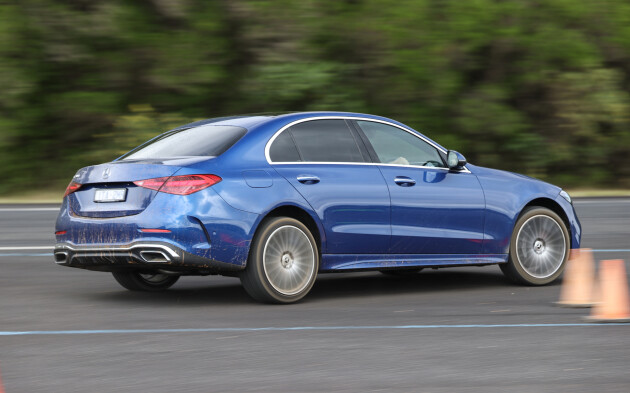 News
NewsMercedes models under recall: S and C Class, GLE, GLC, EQC and GLS affected
A number of the carmaker's models are under recall this month for various reasons
-
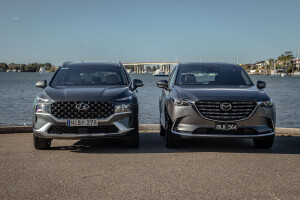 News
NewsEOFY 2022: Best deals on medium and large SUVs
Looking for a good deal this EOFY season? Look no further – we've found you all the latest offers for the segment
-
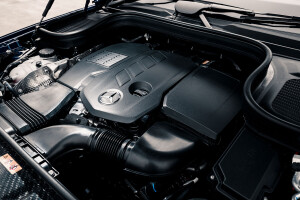 News
News2017-2021 Mercedes-Benz diesel models recalled
Certain models fitted with the OM654 and OM656 engines are affected
-
 News
News2018–2020 Mercedes-Benz SOS system recall impacts almost 40,000 vehicles
A majority of Merc models are affected
-
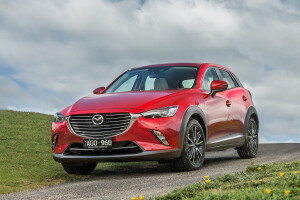
Mazda and Toyota top SUV sales in July 2016
-

Tougher laws announced for NSW P-platers
-
.jpg)
Cars for families with four kids
-
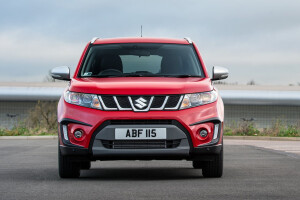
New cars on sale in Australia: April and May


